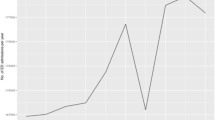Abstract
In this study, Elman recurrent neural networks have been defined by using Resilient Back Propagation in order to determine the depth of anesthesia in the continuation stage of the anesthesia and to estimate the amount of medicine to be applied at that moment. From 30 patients, 57 distinct EEG recordings have been collected prior to during anaesthesia of different levels. The applied artificial neural network is composed of three layers, namely the input layer, the middle layer and the output layer. The nonlinear activation function sigmoid (sigmoid function) has been used in the hidden layer and the output layer. Prediction has been made by means of ANN. Training and testing the ANN have been used previous anaesthesia amount, total power/normal power and total power/previous. The system has been able to correctly purposeful responses in average accuracy of 95% of the cases. This method is also computationally fast and acceptable real-time clinical performance has been obtained.






Similar content being viewed by others
References
Isaac, P. A., and Rosen, M., Lower oesophageal con-tractility and detection of awareness during an-aesthesia. Br. J. Anaesth. 65:319, 1990. doi:10.1093/bja/65.3.319.
Russell, I. F., Comparison of wakefulness with two anaesthetic regimens. Br. J. Anaesth. 58:965, 1986. doi:10.1093/bja/58.9.965.
Muthuswamy, J., and Roy, R. J., The use of fuzzy integrals and bispectral analysis of the electroencephalogram to predict movement under anesthesia. IEEE Trans. Biomed. Eng. 46 (3)291–299, 1999.
Aydın, A., Çömelekoğlu, Ü., Koçak, Z., Özge, A., Atıcı, Ş., Oral, U., The hemodynamic effect of remifentanil on stress response to tracheal, intubation: Correlations with quantitative EEG analysis. Bull. of Clin. Psychopharmacol. 11, N.: 4, 2001
Da Silva, L., EEG analysis: theory and practice. In: Niedermayer, E., and Da Silva, L. (Eds.), Electroencephalography basic principles, clinical applications, and related fields, 4th edition. Lippincott Williams & Wilkins, USA, pp. 1135–58, 1999.
James, C. J., Jones, R. D., Bones, P. J., and Carroll, G. J., Detection of epileptiform discharges in the EEG by a hybrid system comprising mimetic, self-organized artificial neural network, and fuzzy logic stages. Clin. Neurophysiol. 110:2049–2063, 1999.
Arıkan, M. K., Psychiatric electrophysiology, Lilly Medicine Stock Company Publication, pp. 14–20, 1998.
Iselin-Chaves, I. A., Flaishon, R., Sebel, P. S., et al., The effect of the interaction of Propofol and Alfentanil on recall, loss of consciousness, and the bispectral index. Anesth. Analg. 87:949–955, 1998. doi:10.1097/00000539-199810000-00038.
Gotman, S. Y., Pasupathy, J., Flanagan, A., Rosenblatt, D., and Gottesman, B., An expert system for EEG monitoring in the pediatric intensive care unit. Electroencephalogr. Clin. Neurophysiol. 106 (6)488–500, 1998.
Ortolani, O., Conti, A., Di Filippo, A., Adembri, C., Moraldi, E., Evangelisti, A., Maggini, M., and Roberts, S. J., EEG signal processing in anaesthesia. Use of a neural network technique for monitoring depth of anaesthesia. Br. J. Anaesth. 88(5):644–648, 2002. doi:10.1093/bja/88.5.644.
Jiao, L., et al (eds.), Using back propagation feedback neural networks and recurrence quantification analysis of EEGs predict responses to incision during anesthesia, ICNC 2006, Part II, LNCS 4222, pp. 364–373, 2006.
Temurtas, F., Gunturkun, R., Yumusak, N., and Temurtas, H., Harmonic detection using feed forward and recurrent neural networks for active filters. Electric Power. Syst. Res. 72:33–40, 2004.
Riedmiller, M., and Braun, H., A direct adaptive method for faster backpropagation learning: The RPROP algorithm. Proceedings of the IEEE Int. Conf. On Neural Networks, San Francisco, CA, 1993. March 28.
Brent, R. P., Fast training algorithms for multi-layer neural nets. IEEE Trans. Neural Netw. 2:346–354, 1991. doi:10.1109/72.97911.
Author information
Authors and Affiliations
Corresponding author
Rights and permissions
About this article
Cite this article
Güntürkün, R. Determining the Amount of Anesthetic Medicine to Be Applied by Using Elman’s Recurrent Neural Networks via Resilient Back Propagation. J Med Syst 34, 493–497 (2010). https://doi.org/10.1007/s10916-009-9262-0
Received:
Accepted:
Published:
Issue Date:
DOI: https://doi.org/10.1007/s10916-009-9262-0




